- Expert advice/
- Invites & paper/
- Invitations/
- How Much Do Wedding Invitations Cost on Average?
- Invitations
How Much Do Wedding Invitations Cost on Average?
Average wedding invitation suite cost is $400-600; see how design and paper choices, suite add-ons, and guest count shape your spending and get planning tips to stay within budget.
Last updated September 25, 2025

- Budget basics: Most couples spend $400-600 on their complete wedding invitation suite, with costs varying by guest count, add-ons, and design choices—you'll need about 75-80 invitations for 100 guests since you send one per couple.
- Hidden costs add up: Beyond printing, factor in postage (extra fees for heavy or square envelopes), assembly time, and ordering 10-15% extra invitations for mistakes and keepsakes—these can increase your budget by 25-40%.
- Smart savings strategies: Save money by choosing standard sizes, using digital RSVPs instead of printed response cards and ordering early to avoid rush fees
- Options for every budget: Beautiful invitations exist from $200 (DIY templates with digital printing) to $700+ (custom designs with letterpress or foil stamping)—your invitation budget should represent about 2-5% of total wedding spending.
Wedding invitations represent one of your first major stationery decisions, and understanding the costs upfront helps you plan a realistic budget. Your invitation expenses depend on several key factors, from your guest count and design preferences to printing methods and paper quality.
This breakdown covers everything that affects invitation pricing, from basic digital options to luxury letterpress suites. You'll learn about hidden costs that often surprise couples, smart ways to save money without sacrificing style, and how to create beautiful invitations that fit your budget perfectly.
What Do Wedding Invitation Suites Cost on Average?
Most couples spend between $400 to $600 for a standard suite including invitations, RSVP cards, and basic postage for a 100-guest wedding. According to Zola, a Zola couple spends less, with an average of $190 for a full invitation suite. Your guest count drives the biggest portion of your invitation budget. A wedding with 100 guests requires about 75-80 invitation suites since you send one invitation per couple, not per person.
Remember that wedding invitations represent just one piece of your total stationery needs. Most couples also need save the dates, day-of programs, menus, and thank you cards to complete their paper suite.
What's Included in Your Wedding Suite Budget?
Your wedding stationery budget covers multiple items used throughout your engagement and wedding timeline. Each piece serves a different purpose and arrives at specific moments in your planning process.
Save the dates
Save the dates go out seven to ten months before your wedding date. They give guests advance notice to book travel and request time off work. Digital save the dates cost little-or-nothing to send, while printed versions range from $1-4 per piece depending on design complexity.
Invitations and RSVP cards
Your main invitation suite includes the formal invitation, RSVP response cards, and all necessary envelopes. This represents the largest portion of your stationery spending, typically accounting for 60-70% of your total paper budget.
Traditional invitation suites include multiple pieces assembled together. The main invitation states your wedding details, while RSVP cards let guests respond with their attendance plans. Many couples now skip printed RSVP cards entirely, directing guests to respond through your wedding website instead.
Ceremony and reception paper
Day-of stationery includes programs explaining your ceremony, menus showcasing your dinner choices, and place cards directing guests to their tables. These items often get overlooked in initial budgets but add $150-400 to total stationery costs.
Programs help guests follow along during your ceremony, especially if you're including cultural traditions or religious elements they might not recognize. Menus are necessary if guests order at the wedding vs. ahead of time on an RSVP card while place cards create a more formal, organized feel.
Thank you cards
Thank you cards close out your stationery timeline, typically ordered after your wedding for sending within eight weeks of your celebration. You'll need one card for every household that attended your wedding or sent a gift.
Most couples order the same quantity as their original invitation count. Thank you cards represent the smallest portion of your stationery budget but remain essential for proper wedding etiquette and showing gratitude to your guests.
What Makes Wedding Invitations More or Less Expensive?
Several key factors determine where your invitation costs fall within the typical range. Understanding these elements helps you make strategic choices about your stationery spending.
Guest count impact
Your guest count creates the foundation for all invitation pricing since most vendors charge per piece. However, you order by couple rather than individual guests. A married couple living together receives one invitation, whether both people attend or just one.
If the couple has kids, they can also receive one invitation with their parents. However, if their kids are adults, even if they live in the same household, it is standard to send separate invitations.
Bulk pricing often reduces per-piece costs as quantities increase. Ordering 150 invitations typically costs less per invitation than ordering 50 pieces. Many vendors offer price breaks at common quantity thresholds like 75, 100, and 150 pieces.
Design and customization choices
Design complexity significantly impacts pricing across all budget levels:
- DIY: Cost only materials like paper, ink, and your time investment
- Semi-custom designs: Professionally created templates you can personalize with your details
- Fully custom artwork: Original designs created specifically for your wedding celebration
Template-based options from online providers, like Zola, offer the best balance of professional appearance and affordable pricing. You get beautiful designs without the premium cost of custom illustration work.
Printing methods and paper quality
Different printing techniques create distinct price points and visual effects. Digital printing provides the most affordable baseline option with clean, sharp text and graphics. Letterpress creates pressed-in texture by stamping designs into thick cardstock but costs more than digital methods.
Foil stamping adds metallic accents in gold, silver, or colored foils for mid-range pricing upgrades. Thermography creates raised ink effects that mimic letterpress texture at moderate cost increases over standard digital printing.
Paper weight and texture also influence final costs. Heavier cardstocks feel more substantial in guests' hands but cost more and require additional postage. Specialty papers with unique textures or cotton content command premium pricing over standard cardstock options.
Wedding Invitation Options for Every Budget
Beautiful, memorable invitations exist at every price point. Understanding what each budget tier typically includes helps you set realistic expectations and find options that match your financial priorities.
Affordable wedding invitations in the $200-450 range focus on digital printing with quality cardstock and clean, professional designs. Template-based options provide extensive customization without custom design fees. Basic envelope addressing keeps costs manageable while maintaining polished appearance.
Online retailers and DIY approaches, like printing your own wedding invitations, work particularly well for budget-conscious couples. You can achieve beautiful results by choosing simple designs and focusing on quality paper rather than elaborate printing techniques.
Mid-range options spanning $450-700 allow for premium paper upgrades and special design details. Colored cardstock, rounded corners, or textured papers add visual interest without dramatic cost increases. Some custom elements like monograms or simple line drawings become affordable within this range.
Professional envelope addressing and upgraded postage for heavier invitations fit comfortably in mid-range budgets. You might also add envelope liners or wax seals for extra elegance.
Luxury stationery budgets above $700 open doors to premium printing methods and fully custom designs. Letterpress printing, extensive foil stamping, and original artwork created specifically for your celebration become viable options. Hand-painted elements, custom venue illustrations, or elaborate multi-piece suites with various insert cards fall into this category.
Hidden Costs to Include in Your Budget
Several frequently overlooked expenses can increase your final invitation spending by 25-40% beyond base printing costs. Planning for these additional charges prevents budget surprises and helps you make informed decisions.
Wedding invitation postage extends far beyond standard stamp costs:
- Weight considerations: Invitations over one ounce require additional postage
- Size restrictions: Square envelopes cost extra to mail regardless of weight
- Thickness limits: Multiple layers or embellishments trigger surcharges
Weighing a complete assembled invitation at the post office before ordering stamps prevents costly mistakes. Postal workers can tell you exactly what postage each invitation requires.
Assembly time becomes significant with complex multi-piece invitations. Professional assembly services charge $1-3 per invitation but save hours of work for large guest lists. DIY assembly requires substantial time investment that many busy couples underestimate.
Rush production fees apply when you need invitations faster than standard timelines. Most vendors require 3-4 weeks for normal production, with rush orders adding 30-50% to base costs. Planning ahead eliminates these unnecessary charges.
Extra quantities beyond your guest count serve multiple purposes:
- Addressing mistakes: Even careful addressing sometimes requires do-overs
- Last-minute additions: Guest lists often grow slightly during planning
- Keepsakes: Many couples want extras for wedding books and family members
We recommend ordering 10-15% more than your final count to cover these needs.
Smart Ways to Save on Wedding Invitations
Strategic planning and smart choices can significantly reduce invitation costs without sacrificing quality or style. These approaches work especially well for couples who want to allocate more budget to other wedding elements.
- Start your stationery planning early to avoid rush fees and take advantage of sales or promotions. Finalizing your guest list and design preferences 4-6 months before your wedding provides ample time for standard production schedules.
- Choose standard invitation sizes that fit regular postal requirements. Custom sizes or shapes often trigger additional postage charges, while standard dimensions keep mailing costs at basic rates.
- Consider all-in-one invitation formats where a RSVP link appears directly on the main invitation. This approach eliminates separate response cards and return postage. Most guests prefer online responses for convenience, and you'll appreciate automatic response tracking.
“If you’re worried about some guests having trouble RSVPing digitally, you can always order a few RSVP cards just for those guests.” - Saachi, Zola’s Paper Marketing Manager
- Shop at Zola! Yes, we know we are biased, but buying your wedding stationery at an online retailer like Zola is kind of a no-brainer. Not only are our invitations truly affordable, they come in tons of different styles from rustic wedding invitations to modern and vintage.
- Mix printed and digital elements strategically. Use printed invitations for the formal announcement but digital programs accessed via QR codes or wedding website links. This approach maintains tradition where it matters most while reducing overall paper costs.
Start Planning Your Wedding Invitations
Creating invitations that reflect your style and fit your budget starts with understanding your complete stationery needs. Whether you're drawn to classic elegance or modern minimalism, options exist to match your vision and financial goals.
Your wedding invitation suite budget typically represents 2-5% of total wedding spending according to Zola’s Wedding Cost Index (ZWCI). Setting a realistic stationery allocation that aligns with your other priorities ensures you create beautiful invitations without compromising other important wedding elements.
Ready to explore all your options? Zola’s wedding paper offers you designer wedding paper on a DIY budget. Even more money saving hacks? We offer free envelopes, and guest and return addressing. From save the dates, invitations, add-ons and more, bring your vision to life within your budget.
Wedding Invitation Budget FAQs
How much should wedding invitations cost for 150 people?
Wedding invitations for 150 guests typically cost between $600-900 for a complete suite including invitations, RSVP cards, and postage, depending on your design and printing choices.
Should I order extra wedding invitations beyond my guest count?
Yes, order 10-15% extra invitations to account for addressing mistakes, last-minute guest additions, and keepsakes for family members and your wedding album.
Can I use different postage for heavy wedding invitations?
Invitations weighing over one ounce or using non-standard sizes require additional postage, typically an extra $0.24-0.44 per piece depending on total weight and dimensions.
Is it acceptable to skip printed RSVP cards?
Yes, digital RSVPs through your wedding website offer a convenient, eco-friendly alternative that most guests prefer and eliminates printing and return postage costs.
When should I order my wedding invitations?
Order invitations 3-4 months before your wedding date to allow time for production, addressing, and mailing while avoiding expensive rush fees.
Up next for you
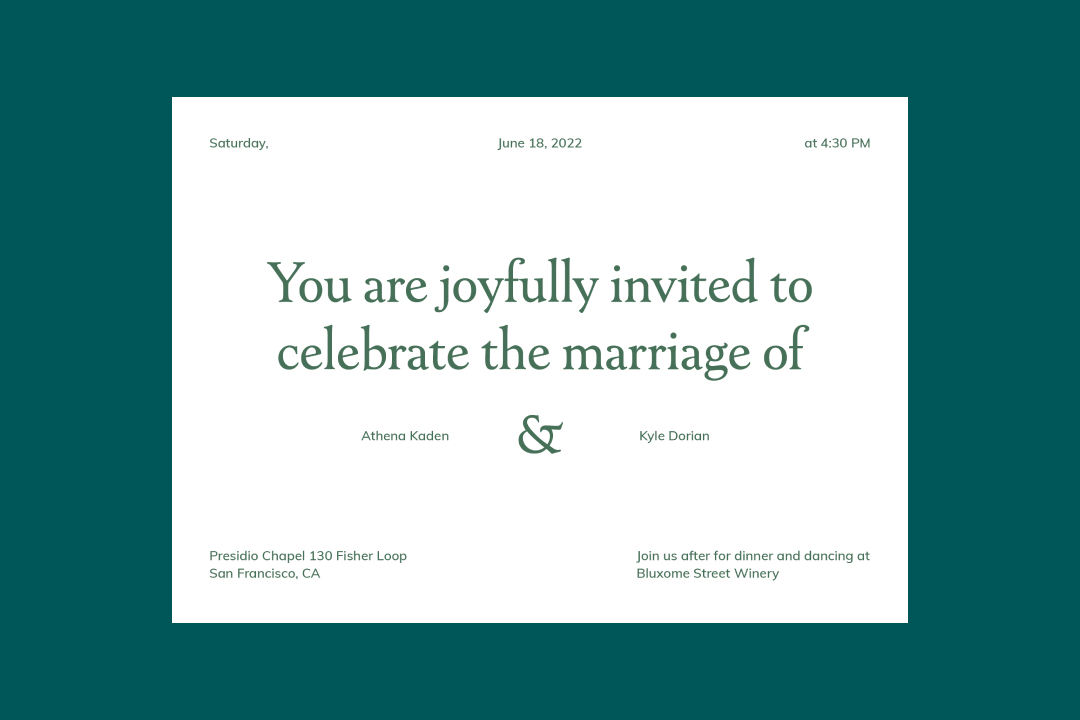
Wedding Invitation Wording: A Complete How-To Guide
How-To
Learn the how-to's of wedding invitation wording, plus formal and casual wedding invitation examples from the experts.
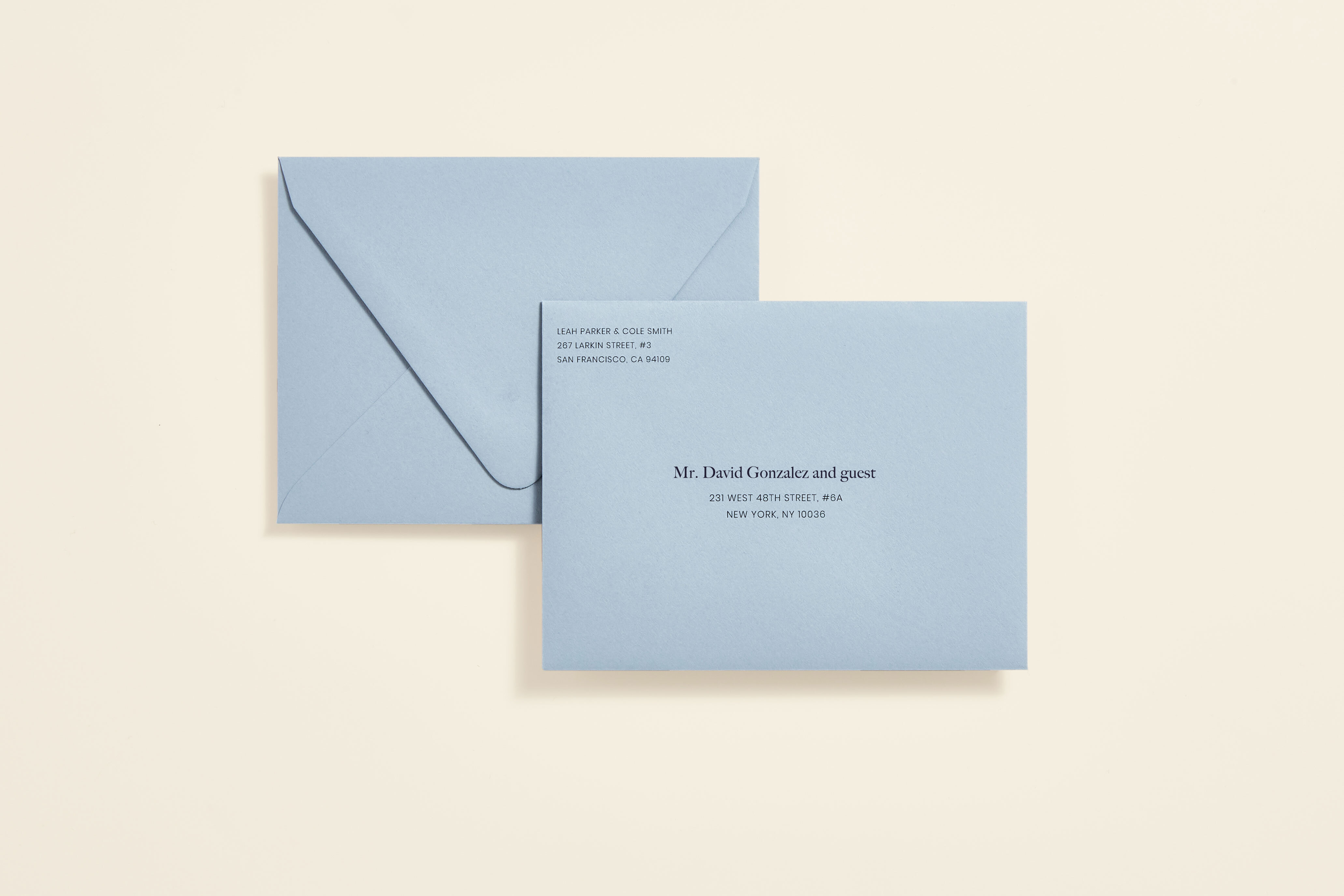
How to Address Wedding Invitations: Etiquette & Examples
How-To
Master the art of addressing wedding invitations with proper etiquette. Learn formal and modern approaches to create elegant and inviting cards.
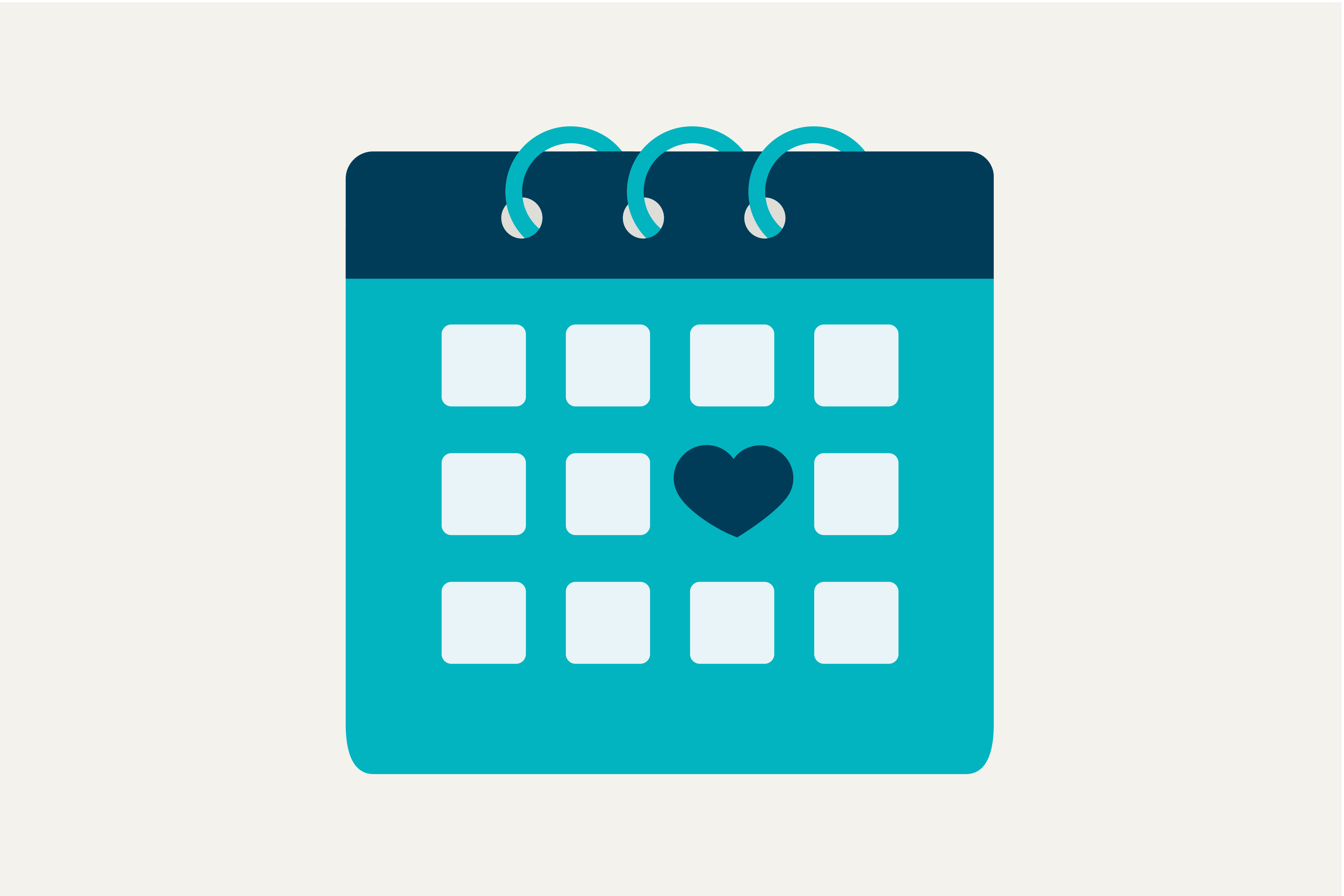
When to Send Out Wedding Invitations
Inspiration
When is it too early or too late to send out invites? Find out when to send wedding invitations and everything you need to consider for your planning timeline.
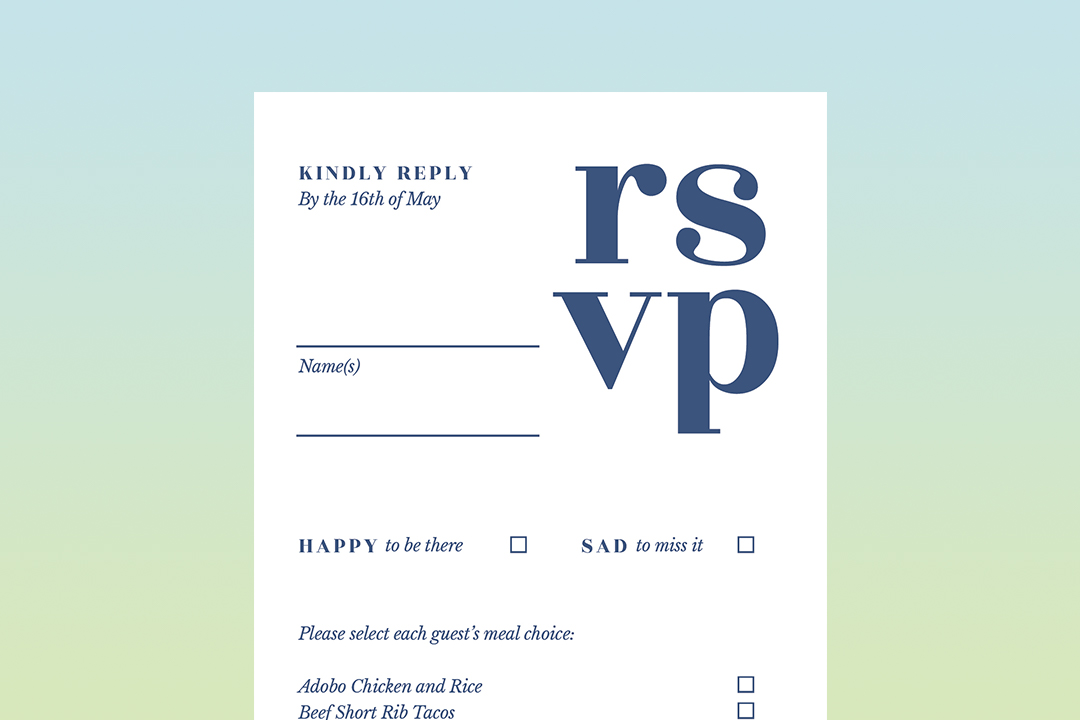
An Expert Guide to Wedding RSVP Cards & Complete Stationery Packages
Inspiration
Master wedding RSVP etiquette and discover complete wedding stationery packages with perfectly coordinated RSVP cards, free addressing, quality paper, and matching designs.

A Guide to Invitation Enclosure Cards
Inspiration
Explore our guide to learn everything you need to know about enclosure cards.
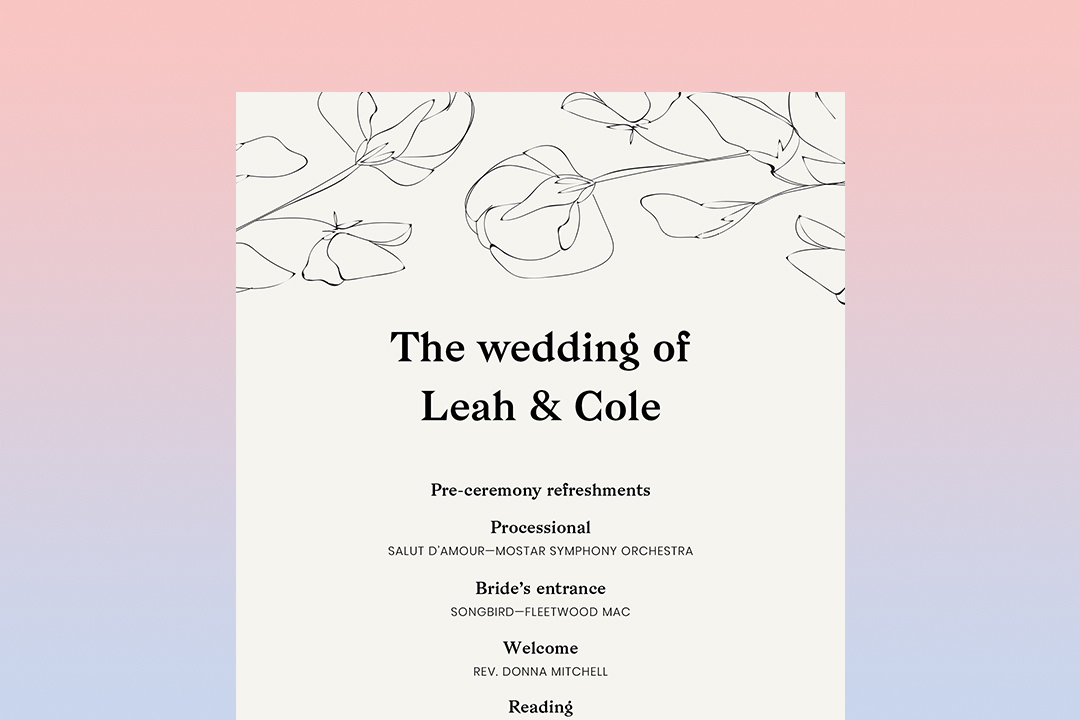
A Guide to Wedding Ceremony Programs
Inspiration
Wedding ceremony programs communicate valuable information to your guests about your ceremony service—find out all you need to know to choose, word, and personalize your wedding programs.
Featured

The First 10 Things to Do When Planning a Wedding
How-To
You're engaged—congrats! To help you ease into wedding planning, we’re here with a list of the very first things you should do once you get engaged.

Average Cost of Weddings in 2026: Vendor Price Guide
Advice
Average cost of weddings in 2026: See national averages for venues at $8,573 and catering at $6,927, plus key vendor costs to plan your budget.

How to Set Your Wedding Budget Step by Step
How-To
While it may not be the most exciting item on your to-do list, setting your wedding budget is essential. We’ll break down the typical expenses, guide you through the entire process from start to finish, and tell you where you can save money.
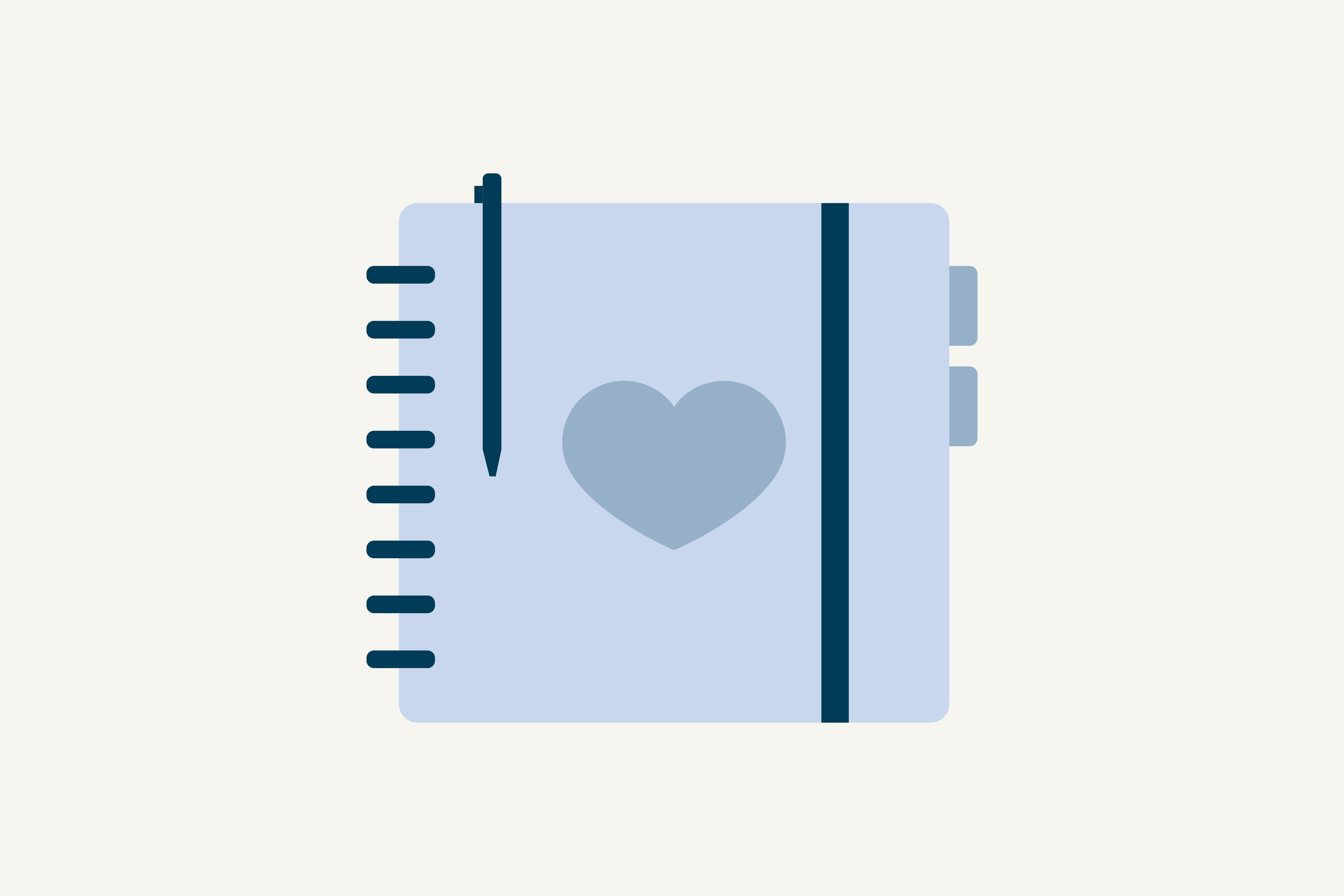
How to Plan a Wedding: A Step-by-Step Guide
How-To
We’ll walk you through the steps of online wedding planning, highlighting all of Zola’s incredibly easy and intuitive online wedding planning tools that’ll make planning for the big day more fun and less frustrating.
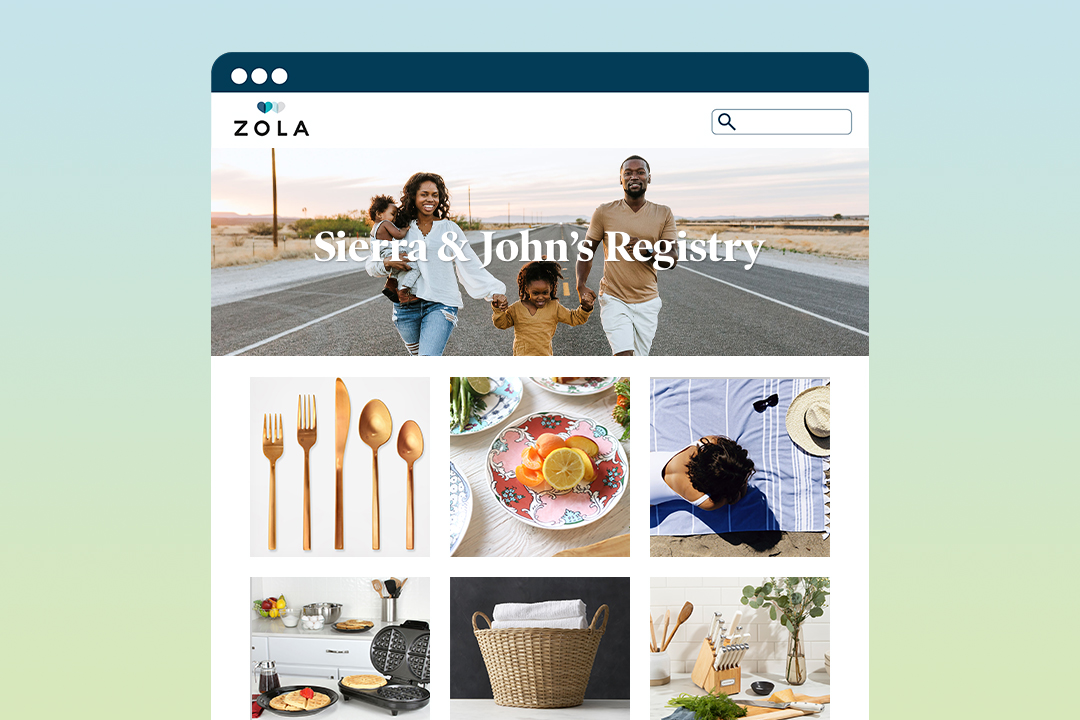
How to Create a Registry if You Already Live Together
How-To
We're here to tell you why building a wedding registry is still really necessary, regardless of whether you live together before marriage.
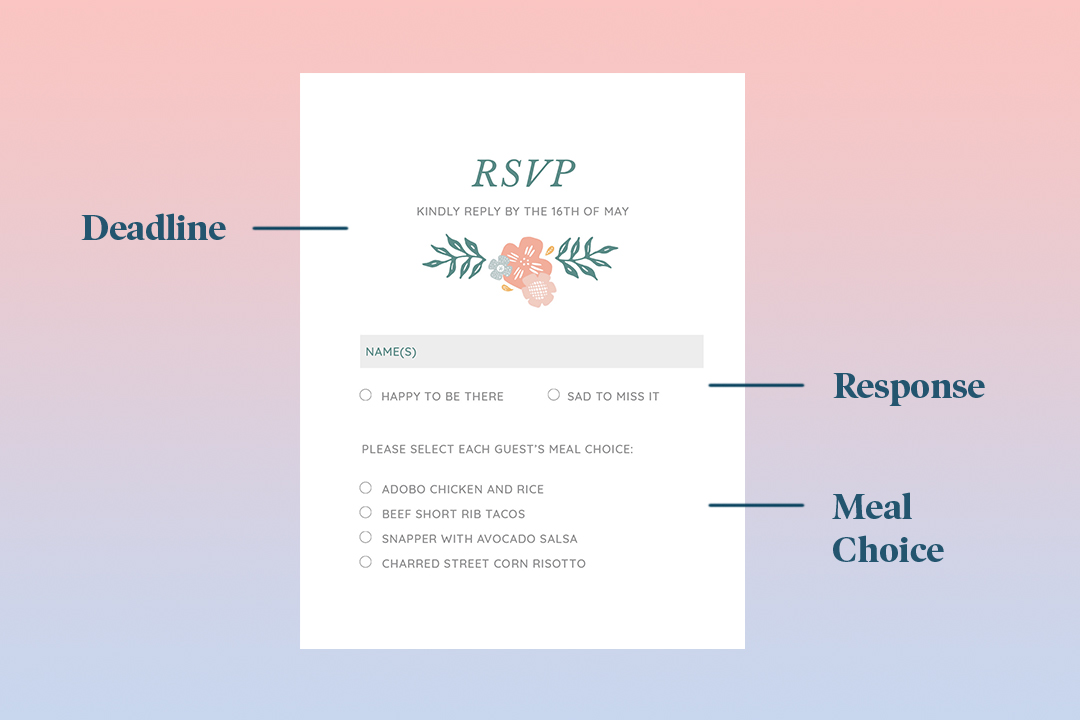
How to RSVP to a Wedding
How-To
If you've received an invitation to a wedding and you're not sure how exactly to respond? This is our guide to wedding RSVP etiquette, tips, and steps.
- Expert advice/
- Invites & paper/
- Invitations/
- How Much Do Wedding Invitations Cost on Average?
Find even more wedding ideas, inspo, tips, and tricks
We’ve got wedding planning advice on everything from save the dates to wedding cakes.
